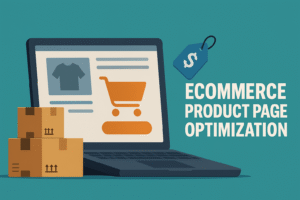In 2021, the global ecommerce market value climbed to just shy of $5 trillion. It has also been estimated that over 230 million Americans have bought merchandise online at least once in the past year. Despite this staggering number, many businesses are not maximizing the potential that ecommerce has to offer.
There are 3 basic strategies your ecommerce business can focus on to ensure they are reaching as many customers as possible.
Direct to Consumer
The first and most profitable strategy is direct to consumer business models. This model allows you to cut out the middleman and run your own store on an ecommerce platform such as Shopify, WooCommerce, Etsy, Amazon, or eBay. Not only do you avoid paying additional fees to marketplaces, but you are also able to personalize and have complete control over your brand. This directly aligns with millennial shoppers who want more personalization and value transparency in their purchases.
There are some disadvantages to this strategy. For example, shipping and logistics can be difficult if you don’t have your own warehouse or a fulfillment partner. You also miss out on the extra marketing clout that comes with being on a major platform or part of a major retailer.
That brings us to the next strategy.
Retail Partnerships
The second strategy is retail partnerships. This option allows you to market your product in major retailers such as Walmart, Target, or Amazon. You can also partner with ecommerce retailers that have a large customer base. These channels typically offer more exposure than opening an online store. Retail partners can make it easier to grow your brand and reach new customers.
There are some drawbacks here as well. You’ll likely have to give up a large percentage of your margins to partner with these distributors, which means you need to be selling in high volumes to make the partnership worthwhile and also have healthy margins on your products to make it profitable.
Another drawback is that even if you produce a great product with a great brand you do lose some control over your brand image. Depending on the partnership agreement, you have lose a lot of control in how your products are displayed or marketed. This is especially true for newer products. A well established brand will have more leverage in negotiating a deal that favors them and gives them more control in the marketing.
For example, T-Mobile, AT&T, and Verizon can certainly advertise that they sell iPhones, but Apple retains a lot of creative control in the advertising that gets pushed out.
Omnichannel
The third strategy is omnichannel marketing. This is a good option for those businesses that want to focus on direct to consumer sales as well as work with retail partners. Omnichannel simply means selling directly and through outside retailers at the same time. For example, children’s clothing retailer Gymboree has their own online shop where they sell clothes, but they also have a partnership with Amazon where customers can buy the same clothes.
An Omnichannel approach gives a business the best of both worlds. You have the control over your brand image and product presentation, but you also have access to additional marketing clout that comes with being on a major platform or part of a large retailer’s catalog.
The key to being successful with any ecommerce strategy is to focus on what works for your business model, audience, and budget. For example, If you are a small business with little budget for marketing, it may make sense to focus on retail partnerships. On the other hand, if you are an established brand with established products and large budgets for marketing it may be easier to go direct to the consumer.
Many shoppers visit the site of a brand to learn more about the product, but then often will buy the product from a retailer.
This is especially true with products that someone may want to see or try out before purchasing. For example, a new mattress. There are lots of mattress companies selling direct to consumers, but they also work with mattress retailers so that prospective customers can check out their products before buying. In order to be
Many brands avoid the omnichannel route because they are concerned about the potential of channel conflict. This is a valid concern, but can be mitigated through solid branding efforts and coordination between all channels to keep the customer experience consistent across channels.
In Conclusion
No matter what strategy you choose there are pros and cons to each approach. The key is find out what works best for your business, current resources, and budget. An omnichannel approach may be the most difficult to manage at first but it offers you the greatest flexibility in the long run.









